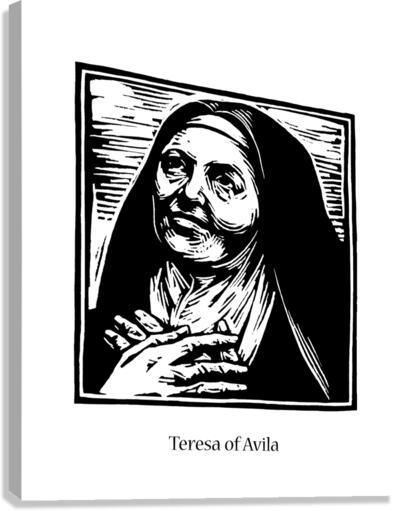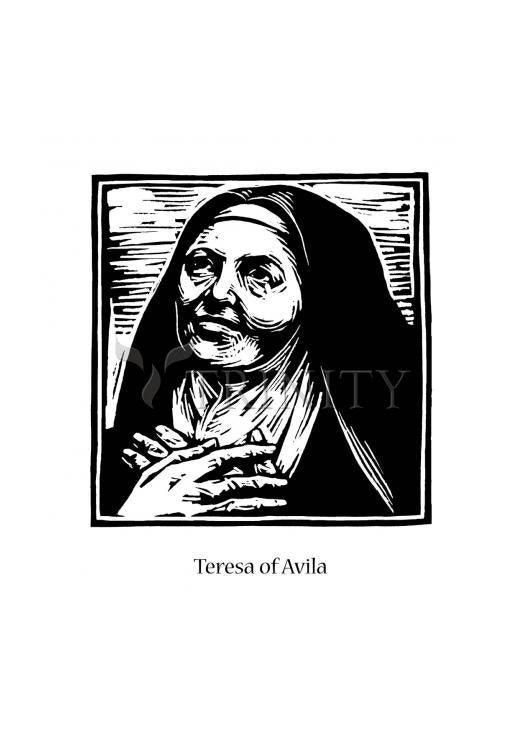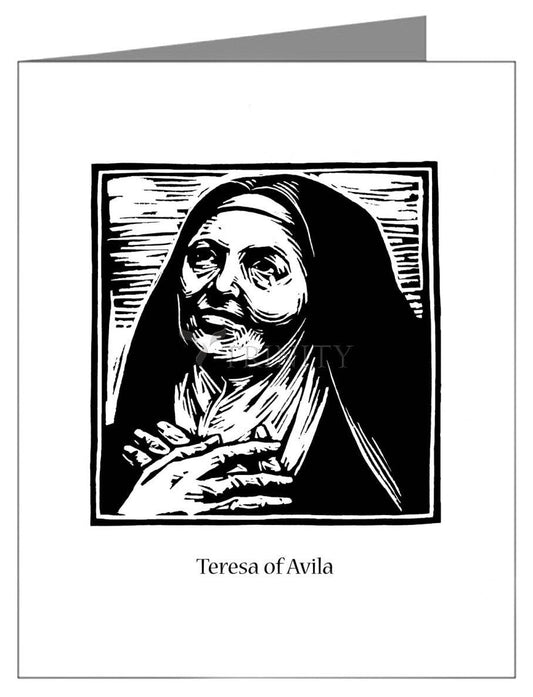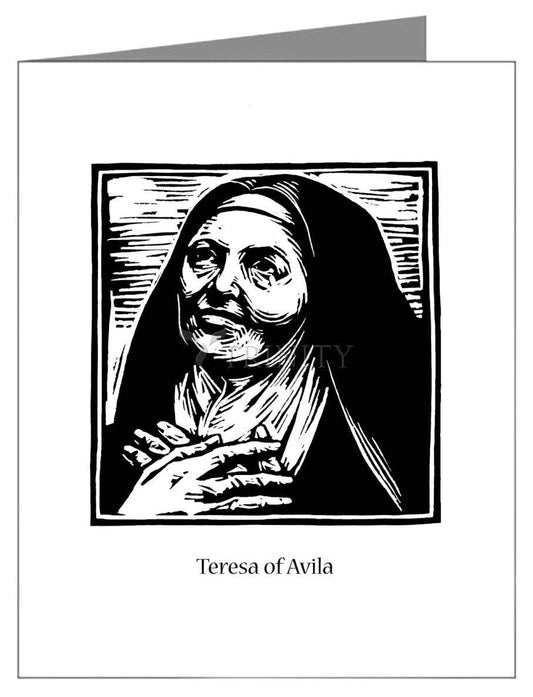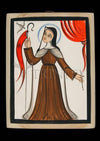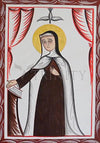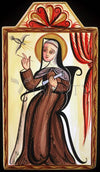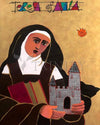In the autobiography which she completed towards the end of her life, Saint Teresa of Avila gives us a description of her parents, along with a disparaging estimate of her own character. "The possession of virtuous parents who lived in the fear of God, together with those favors which I received from his Divine Majesty, might have made me good, if I had not been so very wicked." A heavy consciousness of sin was prevalent in sixteenth-century Spain, and we can readily discount this avowal of guilt. What we are told of Teresa's early life does not sound in the least wicked, but it is plain that she was an unusually active, imaginative, and sensitive child. Her parents, Don Alfonso Sanchez de Capeda and Dona Beatriz Davila y Ahumada, his second wife, were people of position in Avila, a city of Old Castile, where Teresa was born on March 28, 1515. There were nine children of this marriage, of whom Teresa was the third, and three children of her father's first marriage.
Piously reared as she was, Teresa became completely fascinated by stories of the saints and martyrs, as was her brother Roderigo, who was near her own age and her partner in youthful adventures. Once, when Teresa was seven, they made a plan to run away to Africa, where they might be beheaded by the infidel Moors and so achieve martyrdom. They set out secretly, expecting to beg their way like the poor friars, but had gone only a short distance from home when they were met by an uncle and brought back to their anxious mother, who had sent servants into the streets to search for them. She and her brother now thought they would like to become hermits, and tried to build themselves little cells from stones they found in the garden. Thus we see that religious thoughts and influences dominated the mind of the future saint in childhood.
Teresa was only fourteen when her mother died, and she later wrote of her sorrow in these words: "As soon as I began to understand how great a loss I had sustained by losing her, I was very much afflicted; and so I went before an image of our Blessed Lady and besought her with many tears that she would vouchsafe to be my mother." Visits from a girl cousin were most welcome at this time, but they had the effect of stimulating her interest in superficial things. Reading tales of chivalry was one of their diversions, and Teresa even tried to write romantic stories. "These tales," she says in her Autobiography, "did not fail to cool my good desires, and were the cause of my falling insensibly into other defects. I was so enchanted that I could not be happy without some new tale in my hands. I began to imitate the fashions, to enjoy being well dressed, to take great care of my hands, to use perfumes, and wear all the vain ornaments which my position in the world allowed." Noting this sudden change in his daughter's personality, Teresa's father decided to place her in a convent of Augustinian nuns in Avila, where other young women of her class were being educated. This action made Teresa aware that her danger had been greater than she knew. After a year and a half in the convent she fell ill with what seems to have been a malignant type of malaria, and Don Alfonso brought her home. After recovering, she went to stay with her eldest sister, who had married and gone to live in the country. Then she visited an uncle, Peter Sanchez de Capeda, a very sober and pious man. At home once more, and fearing that an uncongenial marriage would be forced upon her, she began to deliberate whether or not she should undertake the religious life. Reading the Letters of St. Jerome helped her to reach a decision. St. Jerome's realism and ardor were akin to her own Castilian spirit, with its mixture of the practical and the idealistic. She now announced to her father her desire to become a nun, but he withheld consent, saying that after his death she might do as she pleased.
Born: March 28, 1515 as Teresa Sanchez Cepeda Davila y Ahumada at Avila, Castile, Spain
Died: October 4, 1582 at Alba de Tormes in the arms of her secretary and close friend Blessed Anne of St. Bartholomew; body incorrupt; relics preserved at Alba; her heart shows signs of Transverberation (piercing of the heart), and is displayed, too
Beatified: April 24, 1614 by Pope Paul V
Canonized: March 12, 1622 by Pope Gregory XV
Readings:
If Christ Jesus dwells in a man as his friend and noble leader, that man can endure all things, for Christ helps and strengthens us and never abandons us. He is a true friend. And I clearly see that if we expect to please him and receive an abundance of his graces, God desires that these graces must come to us from the hands of Christ, through his most sacred humanity, in which God takes delight.
All blessings come to us through our Lord. He will teach us, for in beholding his life we find that he is the best example.
What more do we desire from such a good friend at our side? Unlike our friends in the world, he will never abandon us when we are troubled or distressed. Blessed is the one who truly loves him and always keeps him near.
Whenever we think of Christ we should recall the love that led him to bestow on us so many graces and favors, and also the great love God showed in giving us in Christ a pledge of his love; for love calls for love in return. Let us strive to keep this always before our eyes and to rouse ourselves to love him. For if at some time the Lord should grant us the grace of impressing his love on our hearts, all will become easy for us and we shall accomplish great things quickly and without effort.
"Saint Teresa of Avila








